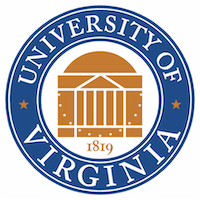
ARCUS member institution, the University of Virginia (UVA), has recently formed the Arctic Research Center (UVAARC). This marks the beginning of a new platform for collaborative Arctic research at the University of Virginia (UVA). Building on decades of Arctic-focused research, education, and outreach efforts—spanning environmental sciences, engineering, architecture, landscape architecture, social sciences, data sciences, art, and music—UVAARC brings together undergraduate and graduate students, postdocs, and faculty from four different schools across UVA, as well as a national and international network of colleagues and institutional collaborators. These collaborations include the recent formation of an Institutional Partnership with the US Army Corps of Engineers Cold Regions Research and Engineering Laboratory (CRREL) and a longstanding collaboration with the National Renewable Energy Laboratory (NREL) Cold Climate Housing Research Center (CCHRC) in Fairbanks, Alaska.
The UVA Arctic Research Center faculty members include:
- Howard Epstein, Xi Yang, and Claire Griffin (School of Environmental Sciences);
- Matthew Jull and Leena Cho (Arctic Design Group in the School of Architecture);
- Matthew Burtner (UVA College of Arts and Sciences Department of Music);
- Caitlin Wylie (Science, Technology and Society Faculty of the Department of Engineering and Society; and
- Luis Felipe Rosado Murillo (School of Data Sciences).
Collectively, these faculty are involved with nine different externally funded grants and projects related to the Arctic. These include awards from the National Science Foundation (NSF) Arctic System Sciences and Arctic Natural Sciences programs to study the dynamics of ice-wedge polygonal systems in tundra (See: COLLABORATIVE RESEARCH: Patterns, Dynamics, and Vulnerability of Arctic Polygonal Ecosystems: From Ice-Wedge polygon to Pan-Arctic Landscapes) and the seasonal ecophysiologies of different boreal forest types (See: Collaborative Research: Environmental and Biological Controls on Carbon Uptake Phenology in Permafrost Affected Boreal Forests. Other awards from NSF focus on Arctic urban sustainability (47 cities total), including a new five-year NSF Navigating the New Arctic (NNA) Collaboratory Award that will produce in-depth, broad-themed studies of five cities, Fairbanks (US), Yellowknife (Canada), Lulea (Sweden), Naryan Mar (Russian Federation), and Yakutsk (Russian Federation) to develop urban sustainability indicators and best planning and design practices with local government and community leaders. We also have several awards from the National Aeronautics and Space Administration (NASA) focusing on remote sensing of tundra and organic carbon in Arctic rivers, along with simulations of the tundra-taiga ecotone, and involvement with NASA’s Arctic Boreal Vulnerability Experiment (ABoVE) program. Finally, the UVA Arctic Research Center is leading an NSF NNA award on understanding interactions between the built and natural environments in the Arctic community of Utqiaġvik, Alaska (See: NNA Track 1: Understanding the Changing Natural-Built Landscape in an Arctic Community: An Integrated Sensor Network in Utqiagvik, Alaska).
The latter NSF NNA project is currently the centerpiece of efforts by the UVA Arctic Research Center. For this project, our overall objective is to use terrestrial and aquatic sensor networks, along with geophysical surveys, throughout the community of Utqiaġvik, Alaska to understand how the built and natural environments interact in the face of climate change—informing future building design practices. Project collaborators are (CRREL) and the (CCHRC) of the National Renewable Energy Laboratory (NREL)). Community collaborators/partners include TRIBN, LLC, Utqiaġvik Iñupiat Corporation (UIC), North Slope Borough Planning and Public Works, and the Tagiuġmiullu Nunamiullu Housing Authority (TNHA). The project began with a virtual kick-off meeting in January 2020, but our chances of having a field season and in-person meetings in 2020 were squashed with COVID-19. Instead of completely wasting a field season, Matthew Jull led a practicum in the Fall 2020 semester, during which he and several Architecture students deployed and tested a network of terrestrial sensors at various locations around a building at a UVA field facility. We also brought on two PhD students, Mirella Shaban and Mackenzie Nelson, and are in the process of hiring our second postdoc (in addition to Claire Griffin), who will work on co-production and the social sciences aspects of the project with Wylie and Rosado Murillo.
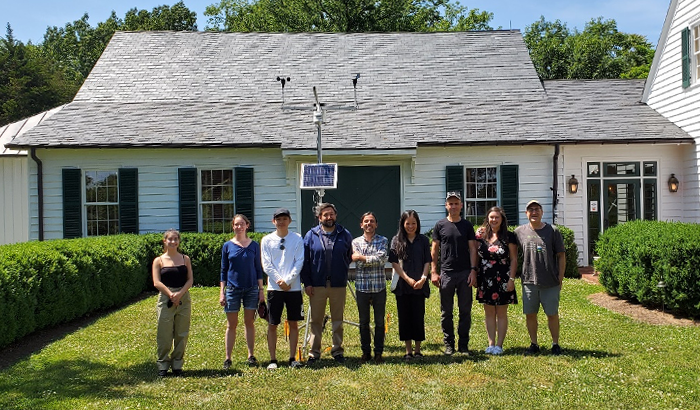
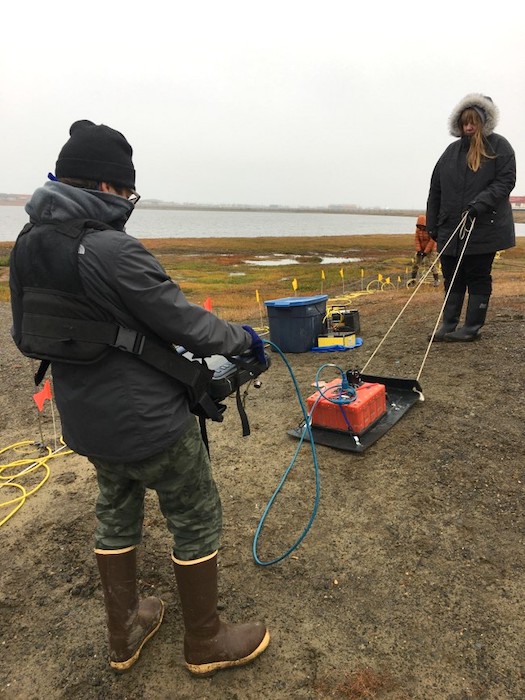
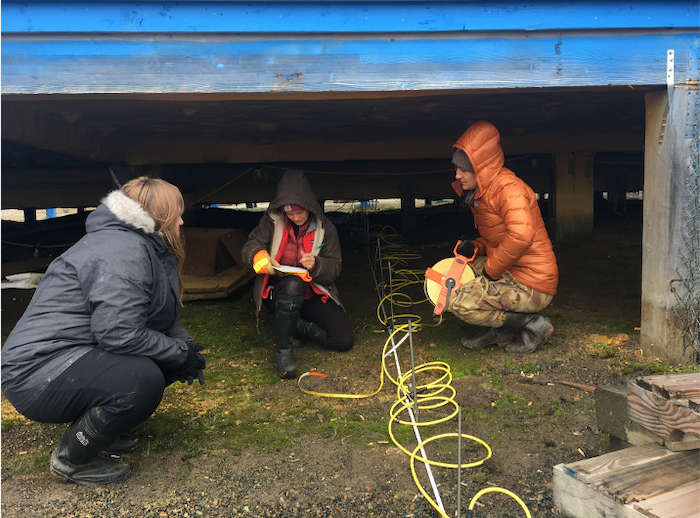
The summer of 2021 was somewhat better than 2020 with regard to COVID, however, the restrictions in travel again forced us to develop creative ways for making progress on the project. We were able to get a small team of researchers in Utqiaġvik at the end of August 2021 to conduct geophysical surveying (ground penetrating radar and electrical resistivity tomography) at three locations within Utqaiġvik: Cake Eater Road, TNHA Apartments and Barrow High School, and Samuel Simmonds Memorial Hospital. Mackenzie Nelson and Luis Felipe Rosado Murillo from UVA joined the team from CRREL (led by Stephanie Saari) in Utqiaġivik to conduct these surveys over a three-day period, but an extended stay was cut short due to a local surge in COVID cases. We also have a sensor base station with several satellite nodes being assembled in Utqiaġvik by a local collaborator (Lars Nelson, TRIBN, Inc.) and a high school student (Mikal Nelson) for possible deployment this winter. A subset of our team, led by Mirella Shaban and Rosado Murillo, is working on developing tools and scripts for data storage, processing, and analysis, using the test data collected at UVA, so that these are ready to go once we begin deployment of the sensor network in Utqiaġvik.
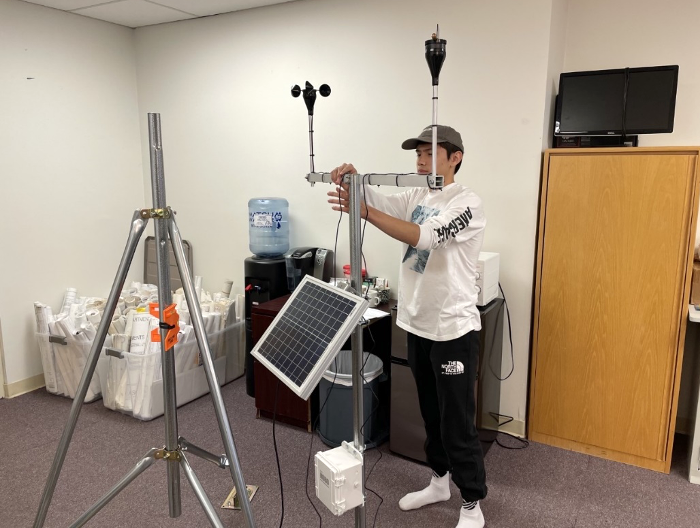
Finally, other important aspects of the project on which we have been working are data management, governance, and accessibility (Rosado Murillo), and Caitlin Wylie is studying our project team as we co-produce information collaboratively among the various within-team entities (e.g., academic researchers, government researchers, and local officials, planners, consultants, and community members). We also continue to engage with local organizations and municipalities in Alaska and abroad through courses at UVA, lectures, and exhibitions—most recently as part of the 2021 International Architecture Biennale in Venice, Italy.
For more information, please feel free to contact the entire group (uvaarc [at] virginia.edu), Howard Epstein (hee2b [at] virginia.edu), or Matthew Jull (mj5kh [at] virginia.edu).
